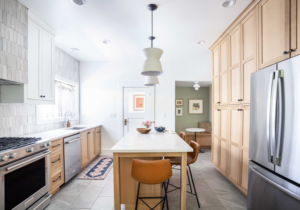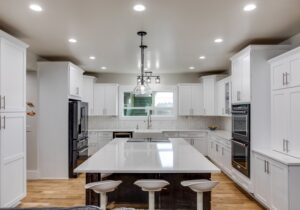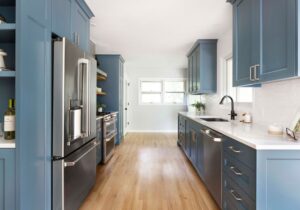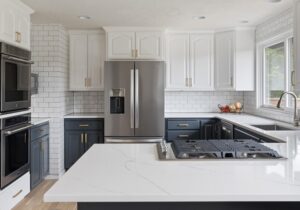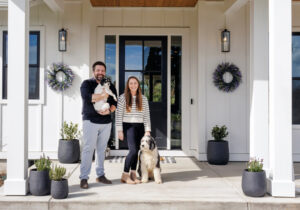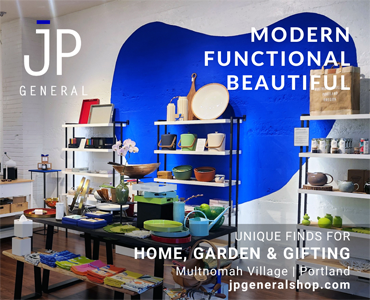A renovation that breathes new life into a century-old home
Photos by Genny Moller
For most people, the kitchen is the heart of the home. And when the space is inadequate, what should be joyful occasions like mealtimes and gatherings can become frustrating experiences. That was certainly the case for the owners of a 1919 home in Portland’s Laurelhurst neighborhood. They wanted to incorporate a dining area within the kitchen for their family of four, as well as utilize the overall space better. It now feels bright and airy thanks to opening up a kitchen wall, new cabinetry, white subway tiles and fresh paint.
“The stove was on the opposite side of the kitchen from the oven, so the layout was awkward for making meals,” explains Dawn Bush, head of operations and marketing for Portland-based design-build firm Build Forward. “We also added storage with floor-to-ceiling cabinetry in a space just off the kitchen and added an additional wall of cabinetry in the kitchen.”
Build Forward’s owner, Javier Montalvo, says they could tell on their first visit that the family was trying to squeeze too many activities into the tiny kitchen, because there was nowhere else to go. “We utilized as much unused space as we could,” says Montalvo, “and we gained probably about 40 square feet for the kitchen.
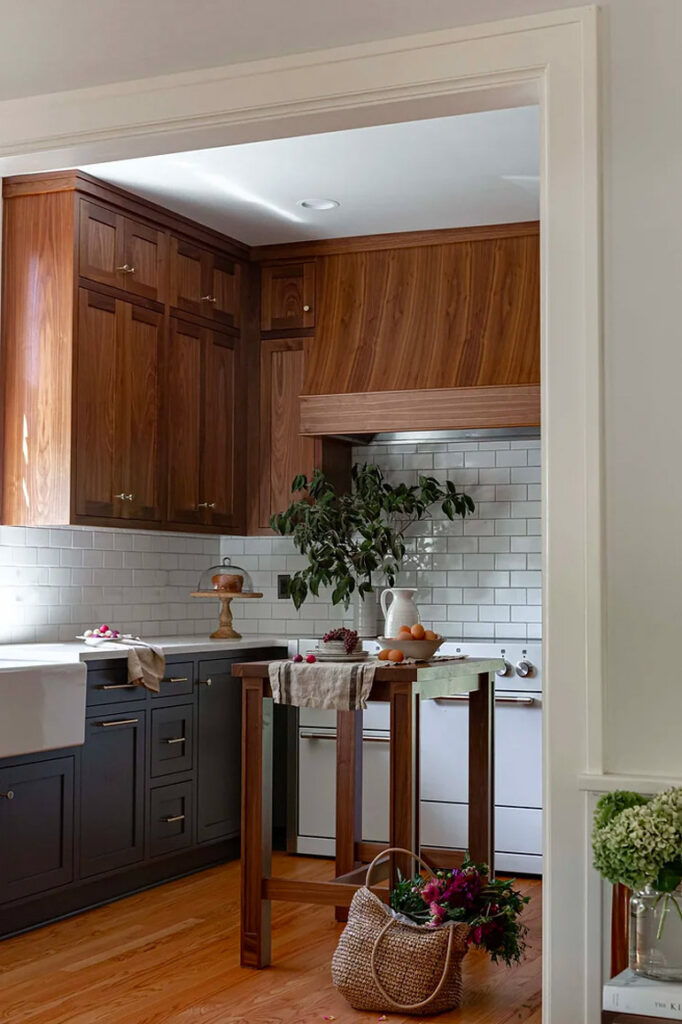
Updating to modern cabinetry also gave them much more storage space. Unused space on an empty wall became a pantry and appliance cabinet. A small shelf atop a cabinet is perfectly placed for the coffee bar. The dining room, now visible from the kitchen, was hidden behind a door-size opening. “We opened that up so someone in the kitchen could talk to someone at the table,” says Bush. “It created a nicer flow but still kept the feel of an older home, which doesn’t usually have a particularly open concept.”
The team found push-button light switches typical for the age of the home to add a vintage touch. An original archway now separates the kitchen from the mudroom, with two French doors that let in an abundance of natural light. A room just off the kitchen wasn’t useful for much other than holding the kids’ art supplies. “We opened that up and turned it into a pantry and extra storage,” Bush says. A wooden shelf added against the window opposite the pantry storage lets the kids work on homework while keeping an eye on their dogs in the backyard and be near the kitchen.
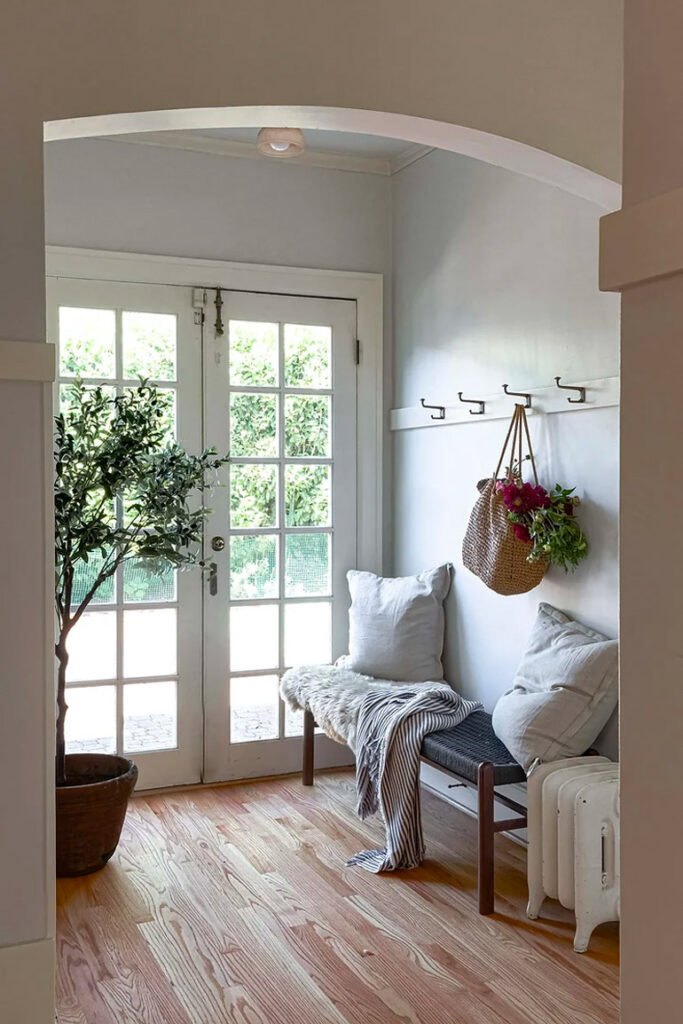

Creating new character for older homes is easy for Montalvo, who grew up in Ecuador. His family had multiple homes throughout the country, and he was inspired by the different types of architecture and styles. Later, he owned a remodeling company and worked on home inspections in Florida, then became the general manager of a design-build company in Boston, where vintage homes abound. Montalvo had previously lived in Oregon, then in 2018 returned to be closer to his daughter in McMinnville.
“In Boston I learned how to respect the character of the home, the age of the house, the style of the house, in trying to work in new materials,” Montalvo says. “You want to have all the advantages of new construction with the same style as the older homes.”
Montalvo started Build Forward in 2018 as a design-build company that goes above and beyond to pay extra attention to budget and financial transparency. In 2023 it brought on an in-house design team. “We go into projects with the knowledge and respect that our clients are investing time and money into their home,” says Bush. “We are diligent in treating our clients and their homes in the same manner we would like to be treated.”
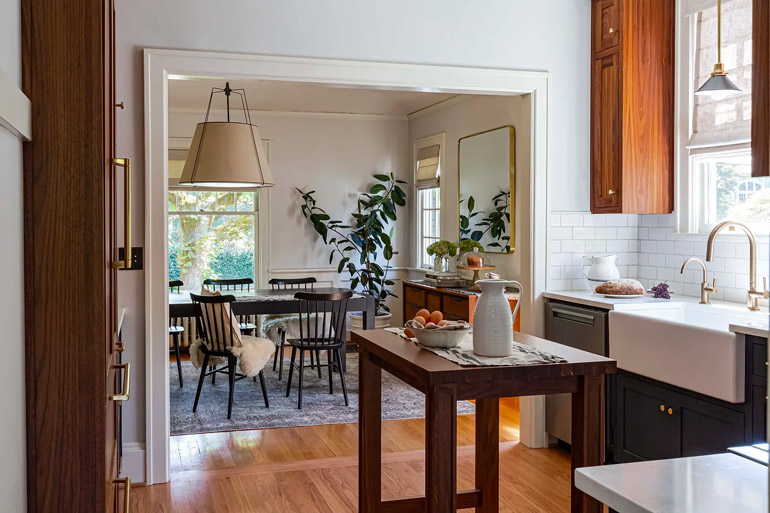
For this project, Montalvo implemented the design of Annalisa Peña of Cedarwood Home. Peña designed around stunning walnut cabinetry built by MH Custom Cabinetry. The stove hood is also wrapped in this beautiful wood. “The color palette with the dark-blue-painted cabinets adds depth and richness,” Bush says. “It’s a really nice blend that updates it while respecting the age of the home.”
Build Forward starts every project by talking over all of the details with clients, starting with the challenges they’re trying to solve and prioritizing needs, wants and hopes. “That way, once the needs are met, we can start looking at wants and hopes,” Bush says. “We also ask about their lifestyle — their kids, their pets, if they entertain, if they cook a lot, if they like showers or soaking in a tub.” Bush says an increasing number of clients are investigating how to have their parents live with them, which makes discussions about aging in place more important. Clients send inspiration pictures, which the designer turns into a mood board to help narrow down choices.
“When homeowners choose an older home, they oftentimes want the character in the older home,” says Montalvo. “They bought it for that character, and they want to keep it but also have some contemporary things. In this project, we were able to do just that.”




